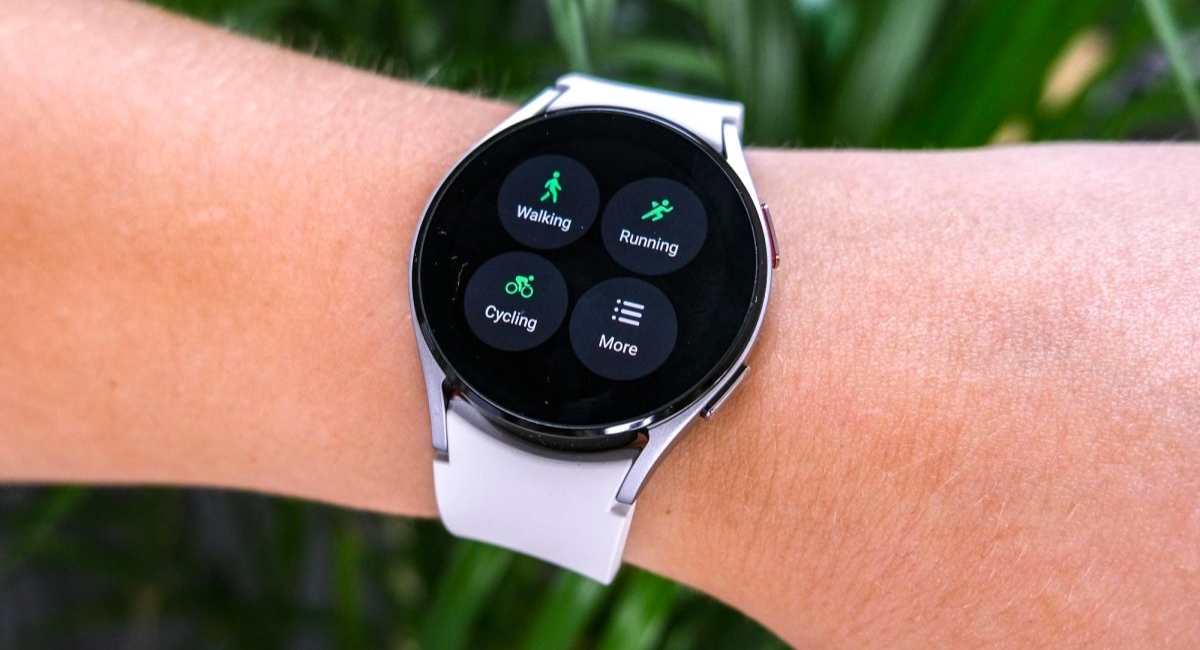Unboxing the Future: Galaxy Watch5 Pro vs. Watch5 - What's Inside Will Surprise You!
Introduction and specs: Samsung took a significant step last year by transitioning from its proprietary Tizen OS for smartwatches to Google's Wear OS, while also adding its unique One UI skin. This strategic move has proven successful as the demand for Galaxy smartwatches continues to grow steadily. Furthermore, this transition has greatly improved the integration between these smartwatches and Android smartphones.
This year, the company made another significant move by removing the rotating bezel from the Classic model and renaming it the Pro. Now, the lineup consists of the Galaxy Watch5 and the Watch5 Pro. The virtual bezel control remains, but the physical bezel is gone.
Here's a comparison of the two models:
Galaxy Watch5 Pro
Body: Titanium, 45mm diameter
Build: Sapphire crystal front glass, MIL-STD-810H compliant, 50m water-resistant (IP68), and 20mm straps
Display: 1.40" Super AMOLED, 450x450px resolution, 321ppi
Chipset: Exynos W920 (5 nm): Dual-core 1.18 GHz Cortex-A55; Mali-G68.
Memory: 16GB storage, 1.5GB RAM
Sensors: ECG certified, blood pressure monitor, accelerometer, gyro, heart rate, barometer
OS/Software: Android Wear OS 3.5, One UI Watch 4.5
Battery: 590mAh
Misc: Qi wireless charging 10W, NFC, Samsung Pay, loudspeaker & mic for calls, virtual rotating bezel
Body: Aluminum, available in 40mm or 44mm diameter
Build: Sapphire crystal front glass, MIL-STD-810H compliant, 50m water-resistant (IP68), and compatibility with 20mm straps
Display: Slightly smaller 1.40" Super AMOLED display, 450x450px resolution, 321ppi
Chipset: Exynos W920 (5 nm): Dual-core 1.18 GHz Cortex-A55; Mali-G68.
Memory: 16Meanwhile, the standard Galaxy Watch5 offers:
Galaxy Watch5
GB storage, 1.5GB RAM
Sensors: ECG certified, blood pressure monitor, accelerometer, gyro, heart rate, barometer
OS/Software: Android Wear OS 3.5, One UI Watch 4.5
Battery: Enhanced battery capacity, especially in the 44mm model, now at 410mAh.
Both models bring notable improvements, with the Pro version featuring almost double the battery capacity compared to its predecessor, now at 590 mAh. The standard Watch5 also receives a battery upgrade, with the 44mm model now having a 410mAh battery, up from 361mAh."
An important upgrade to note is that the new Watch5 series now features a sapphire crystal protecting the display. Taking it a step further, the Watch5 Pro boasts a titanium body for enhanced durability.
In terms of the remaining hardware, there's a striking similarity, as all four watches run on the same Exynos W920 platform, sport a 1.4-inch Super AMOLED display with a resolution of 450 x 450 pixels, and share the same set of sensors, including the ECG monitor and the blood pressure monitor. The Watch5 Pro also offers an additional feature—a body temperature sensor, which could prove particularly valuable in today's context.
While these changes may seem subtle, they can significantly influence the overall user experience. In the following sections, we will explore the capabilities of the Galaxy Watch5 and Watch5 Pro in greater detail.
Unboxing the Galaxy Watch5 and Watch5 Pro
In our collection, we have both the Galaxy Watch5 and the Watch5 Pro. The former is available in a 40mm variant, while the latter is exclusively offered in the 45mm option. Consequently, the Watch5 Pro arrives in a slightly larger package compared to the Watch5, but the contents inside are nearly identical.
When we unbox the Galaxy Watch5 Pro and Watch5, we find the standard set of user manuals, along with a magnetic wireless charging cable. This time, there's a notable improvement – the cable now features a USB-C connector instead of the older USB-A, aligning well with the increasing compatibility of charging bricks with USB-C cables. Samsung's premium Galaxy phones have been using PD USB-C connectors for some time now, making this transition a logical choice.






No comments